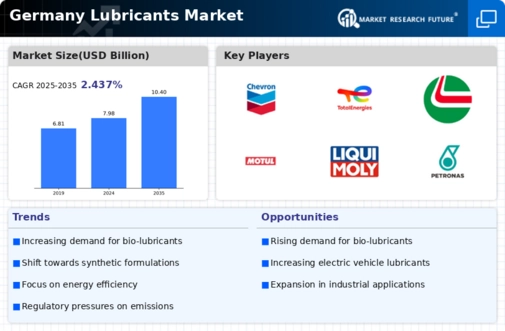The Germany Lubricants Market is characterized by intense competition among various established brands and newer entrants striving to capture market share through innovation, quality, and sustainability. The landscape is shaped by factors such as technological advancements, regulatory changes, and shifting consumer preferences toward eco-friendly products. As industries evolve, companies are pushing the envelope in terms of product performance and environmental impact, seeking to meet the demands of both the automotive and industrial sectors. Market players are investing heavily in research and development to create formulations that address specific end-user needs while maintaining compliance with stringent regulations.
This competitive environment fosters an atmosphere of continuous improvement, where companies must be agile and responsive to market trends and customer feedback. Chevron has a notable presence in the Germany Lubricants Market, building its reputation on a strong foundation of quality and reliability. The company is known for its extensive range of high-performance lubricants that cater to various applications, including automotive, industrial, and marine sectors. Chevron’s strengths lie in its innovative blending technologies and commitment to research, which help in developing cutting-edge products that enhance efficiency and prolong equipment life.
The company's focus on sustainability has led to the introduction of eco-conscious lubricant options that align with growing consumer demand for greener alternatives. Through strategic partnerships and a robust distribution network, Chevron effectively delivers its products across the German market, ensuring accessibility and strong market penetration. TotalEnergies plays a significant role in the Germany Lubricants Market, providing a comprehensive portfolio of lubricants and greases designed for various industries. The company excels in manufacturing high-quality products for automotive and industrial applications, including engine oils, transmission fluids, and specialty lubricants.
TotalEnergies has a strong market presence in Germany backed by its commitment to research and development, which enables the company to introduce innovations that resonate with evolving customer needs. The company has leveraged numerous mergers and acquisitions to enhance its product offerings and expand its market reach, enhancing operational efficiencies and fostering innovation. TotalEnergies is also focused on sustainability, with initiatives aimed at reducing the environmental impact of its products and operations, making it a key competitor in the German lubricant sector.


















